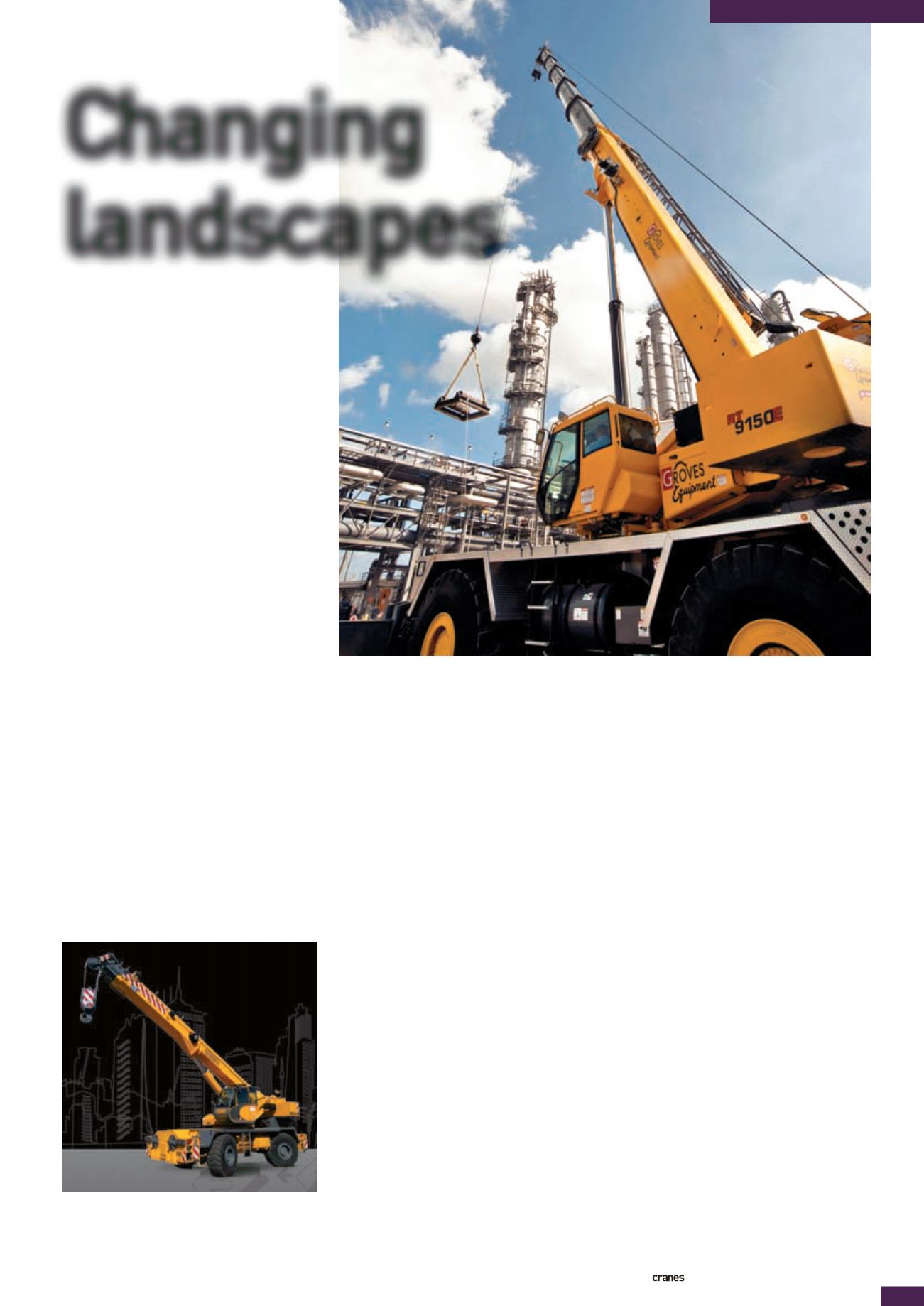
15
INTERNATIONAL AND SPECIALIZED TRANSPORT
■
NOVEMBER 2013
To be able to complete such a variety
of lifts on a single job site maintenance
intervals for rough terrains need to
be kept to a minimum and operating
systems need to be simple and easy to use.
“Operators should be able to operate them
independently of which machine they are
usually operating,” a spokesperson from
Terex explains, “This means that they
should be easy to use and robust.”
Good transportability and
manoeuvrability are other characteristics
that rough terrains need to have. A
spokesperson from Tadano explains more,
“Having a compact carrier in width and
height improves manoeuvrability and
the ability to navigate smaller spaces for
transportation. Having rough terrains that
meet these criteria in the energy sector in
North America is a major factor, as they
need to move through tight spaces.”
To meet this demand Tadano
introduced the GR-1600XL (for the US
market) and the GR-1450EX (for outside
the USA), a 3-axle compact carrier. The
GR-1450EX /GR-1600XL has a 145 tonne
capacity and the boom is 61 metres.
“The model also has a self-removable
counterweight and outriggers which
are cost-effective and provides ease of
transport without requiring an assist crane,”
a company spokesperson adds. The rough
R
ough terrains are a workhorse of
the crane world, often staying on
site for months at a time, being used
on many jobs with different operators on
a daily basis. In more recent years, rough
terrains are even taking on tasks that would
in the past have been assigned to other
crane types, such as small tower cranes
or all terrain cranes. Their popularity is
mainly due to their greater capacity but
compact footprint, fast setup time and
tight turning radii, a spokesperson from
Manitowoc points out.
“Rough terrains are built for general
lifting duties and are referred to as the
wheel barrow of the jobsite,” Casey Smith,
Link-Belt, adds, “You might use a rough
terrain on a jobsite where you are using it
as a helper crane or you might use a rough
terrain where you have a jobsite that a
crawler crane cannot enter.”
>
Rough terrain cranes
are undergoing some
major design changes
as they start to take on
jobs traditionally done
by other crane types.
LAURA HATTON reports
Changing
landscapes
ROUGH TERRAINS
A Grove RT9150E at the
BASF Petrochemical facility
in Grove, Texas, USA
terrains include the HELLO-NET system,
a machine data logging and monitoring
system, as a standard function. It provides
information on operational status, position
and maintenance from owner’s desk, a
company spokesperson adds.
Driving change
Another area affecting the design of
rough terrains is emission regulations,
as Smith explains, “Emissions are one of
the main components for modifications
on our rough terrain Series II technology.
These emission devices add weight and
present a space challenge, but we have
successfully incorporated these devices
without sacrificing the transport weights,
serviceability, and accessibility. For rough
terrain cranes we have made the engine
hood wider to house these devices while
still providing six points of access to the
operator’s cab.”
Despite the challenges presented by
the regulations, crane manufacturers
are finding ways to incorporate the new
engines in the designs. Manitowoc, for
example, has released new models and
redesigned current products with Tier
4 interim engines (Euromot 3B). Crane
manufacturer Sany has also overcome the
design challenges and now offers models
with Tier IV engines in North America and
The Locatelli GRIL8 is one of the newest
rough terrain models from Locatelli since its
acquisition by Media Finanziaria Group


